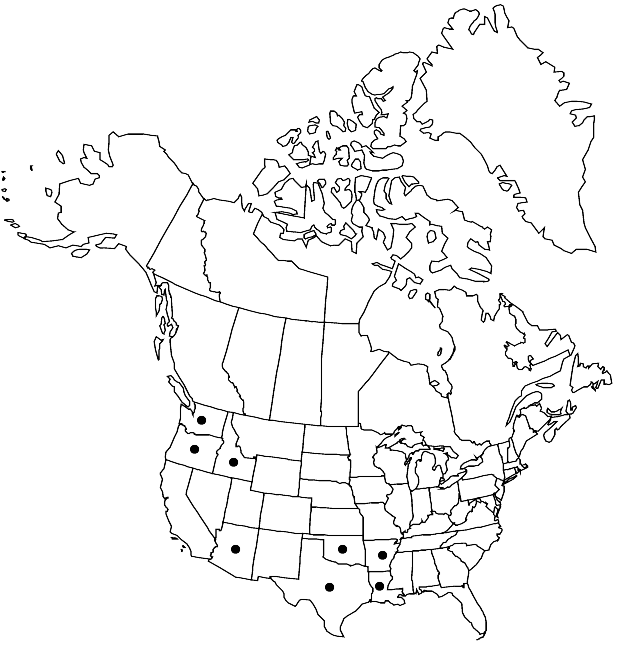Draba platycarpa
Fl. N. Amer. 1: 108. 1838.
Annuals; scapose or subscapose. Stems often unbranched, sometimes branched proximally, (0.3–) 0.5–3.2 (–4) dm, densely hirsute proximally, trichomes simple, 0.9–1.5 mm, and stalked, 2–4-rayed, 0.1–0.6 mm, pubescent distally, trichomes usually branched, rarely simple ones present. Basal leaves rosulate; petiole obscure; blade obovate to spatulate or oblanceolate, 1–4.5 cm × 5–25 (–30) mm, margins dentate, surfaces pubescent, abaxially with stalked, (2 or) 3 or 4-rayed trichomes, 0.1–0.6 mm, adaxially with simple, 0.7–1.3 mm, and stalked, 2–4-rayed ones, 0.1–0.5 mm. Cauline leaves (3 or) 4–8 (–14); sessile; blade similar to basal. Racemes 12–45 (–60) -flowered, ebracteate, elongated in fruit; rachis not flexuous, pubescent, trichomes 2–4-rayed. Fruiting pedicels horizontal to divaricate, straight, 4–9 (–11) mm, pubescent as stem. Flowers: (mid and late-season ones cleistogamous, apetalous); sepals oblong, 1.4–2.2 mm, pubescent; petals white, oblanceolate, (1.7–) 2.5–3.5 (–4) × 1–2 mm; anthers ovate, 0.2–0.35 mm (shorter in cleistogamous flowers). Fruits obovate-oblong to obovate, plane, flattened, 5–8.2 (–9.5) × (2.4–) 2.8–3.7 (–4) mm; valves pubescent, trichomes simple, antrorse, 0.2–0.5 mm; ovules (28–) 40–70 (–82) per ovary; style 0.01–0.2 mm. Seeds ovoid, 0.5–0.7 × 0.3–0.5 mm. 2n = 16, 32.
Phenology: Flowering Feb–Mar.
Habitat: Rocky hillsides, gravelly and sandy areas, dry plains, roadsides
Elevation: 0-500 m
Distribution

Ariz., Ark., Idaho, La., Okla., Oreg., Tex., Wash.
Discussion
Draba platycarpa is occasionally treated as a variety of D. cuneifolia, but is amply distinct from that species (R. L. Hartman et al. 1975).
Selected References
None.
Lower Taxa
"elongated" is not a number."thick" is not a number.
